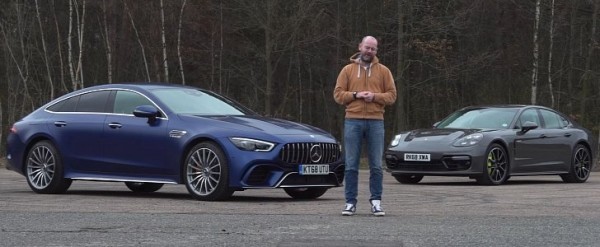
This technology makes it greener and faster, but unfortunately also adds about 300 kilos through batteries and such. On the other hand, the AMG GT 63 S uses the most powerful version of Affalterbach's V8, producing 638 HP and 900 Nm (663 lb-ft) of torque.
Those sexy curves and all that luxury equipment also weight it down, as the GT 63 S tips the scales at around 2.1 tons. However, its 0 to 100 km/h (62 mph) sprint time is better than the Panamera's at 3.2 seconds versus 3.4s.
This comparison review has no drag race, but we've seen plenty of those already, even involving the BMW M5 or the E63 S sedan. Because launching these supercar killers is tricky and they're already at the limit of what tires can do, you're dealing with a coin flip.
Honestly, you're better off basing your decision on other factors, such as the way they drive or the way their interiors are designed. In that regard, the Panamera feels like it's carrying around some extra weight, but its cabin has a timeless quality to it.
The not-so-great thing about it is that some of its functions are hidden within menus. The GT 63 S is based on the E-Class platform and not the GT 2-door coupe, as the name would suggest. That means the gearbox is at the front, which slightly affects balance, but not to a significant degree.
Its less comfortable and more raw, like something wearing the AMG badge should be. In-gear acceleration also revealed turbo lag, but you expect that from the no-hybrid V8.








